Eyes on California - Key Areas of Focus that May Shape the National Policy Landscape
California has embarked on a busy legislative session that will run from January through August, the second year of a two-year session. There are bills returning for a second chance that didn’t make it through the process last year, as well as a host of new bills being introduced. The cloud of a major budget deficit hangs over the Legislature, and this year is an election year with all 80 Assembly seats on the ballot along with half the Senate’s 40 seats. No doubt that policy considerations will be complicated by campaign dynamics.
Across industries and issue sectors, we can expect aggressive, progressive action. California legislators pride themselves on being a leader on the national stage – and with deep political divisions in Washington D.C. it is likely that many will look to California as the place to work through their policy battles. This sets the stage for issues to then move from California across the country. Take for example California’s legislative actions last year related to ESG and corporate disclosures that are causing concern for the business community regarding a patchwork of additional state actions, “The California climate disclosure laws set a dangerous precedent for state-by-state reporting requirements that will lead to greater fragmentation and greater investor confusion, higher costs for companies, and increased liability risk," said Evan William, executive director at the U.S. Chamber's Center for Capital Markets Competitiveness.
Corporations and businesses, associations, and consulting and financial entities need to keep an eye on California to not only shape policy outcomes but also to understand proposals that may be duplicated in other state capitals or feed into the D.C. political discourse.
Five major areas of policy focus in California this year include:
Regulating Technology. California is home to Silicon Valley and a hub for technological innovation. With that comes the need for new policy to match new problems. There is heavy attention on Artificial Intelligence, regulations on self-driving cars, and social media safety rules for children. The pressure is on in California, and tech CEOs are also being called up from California to testify in Congress. Jim Steyer has proposed a ballot initiative aimed at holding social media companies financially liable for any harms that young people experience on their platforms. This could lead to an expensive campaign season, as businesses argue the initiative would open the door to a wave of lawsuits based on vague claims about impacts. There will surely be new rules that emerge this year shaping technology companies and their online platforms.
Funding and Mandating Carbon Reduction. There is a lot of attention on clean energy mandates in California, and we are watching how legislative rules are being implemented through regulatory agencies. Certain technologies receive favor and funding, while other industries argue for how their technology solution fits and should be prioritized in the clean energy landscape. In October, California enacted a law requiring large companies operating within the state, including major global corporations, to disclose their carbon emissions contributing to global warming. Additionally, there were two climate bonds introduced by the Legislature last year that may move forward through the process to get on the ballot this year. If they do move forward, it will be a fight to determine how big and the specific funding priorities. It could mean billions of dollars available for companies – but there will no doubt be winners and losers on whose technology or climate programs get put at the front of the line. A massive budget deficit may make legislators hesitant to take on major bond debt, but on the other hand bond funding provides a way to smooth over the many cuts that will have to occur during the budget process.
Restoring the Insurance Market. California’s series of wildfire crises have caused major ramifications for the home insurance market. The largest companies including State Farm and Farmers have cut back on new policies and renewals, and the industry is looking to revise regulations that shape how they can set premiums and factor in potential climate change impacts. This year will likely include hearings and new rule-making that could reshape the insurance market and impact ratepayers.
Deciding Winners and Losers in the State Budget. The nonpartisan Legislative Analyst’s Office had predicted a $68 billion deficit – a big drop for the 2023-2024 budget which represents $310.8 billion in spending. But now Governor Gavin Newson is pegging the deficit number at closer to $38 billion instead, based on more updated tax revenue information. He unveiled a proposed spending plan that includes about $8.5 billion in cuts, delays in funding for some of the bills he signed last year, and pulling $13 billion from the state’s reserves. Notably Newsom’s budget did not include spending for implementation of SB 253 and SB 261, two bills passed last year by the Legislature on ESG – they require corporate disclosure on GHG emissions up and down the supply and use chain, and disclosure on climate-related financial risks to businesses. This will create uncertainty as companies map out their path to compliance. As always with budget cuts, there will be rational and emotional arguments made in the months ahead, with winners and losers emerging when the budget is finalized by June 15.
Expanding Antitrust Policies. Currently, the California Law Revision Commission is reviewing state antitrust law and will be providing recommendations to the Legislature on the following issues:
Whether the law should be revised to outlaw monopolies by single companies as outlawed by Section 2 of the Sherman Act, as proposed in New York State’s “Twenty-First Century Anti-Trust Act” and in the “Competition and Antitrust Law Enforcement Reform Act of 2021” introduced in the United States Senate, or as outlawed in other jurisdictions.
Whether the law should be revised in the context of technology companies so that analysis of antitrust injury in that setting reflects competitive benefits such as innovation and permitting the personal freedom of individuals to start their own businesses and not solely whether such monopolies act to raise prices.
Whether the law should be revised in any other fashion such as approvals for mergers and acquisitions and any limitation of existing statutory exemptions to the state’s antitrust laws to promote and ensure the tangible and intangible benefits of free market competition for Californians ... (2022 Cal. Stat. res. ch. 147.)
The business community will be highly engaged in the recommendations and anticipated legislation which could create a precedent for other state Legislatures to look at revising their rules as well.
For questions on California policy - politics - process - or perceptions, just reach out to get connected.
KP Public Affairs


